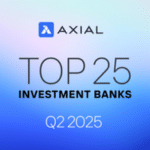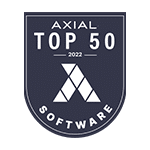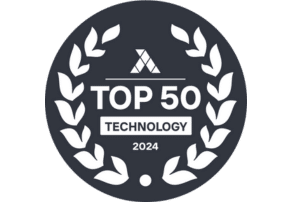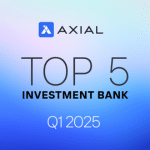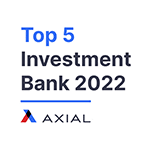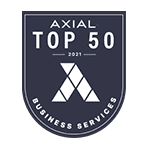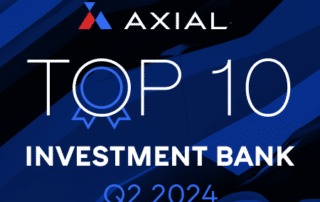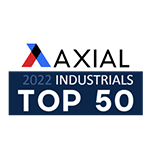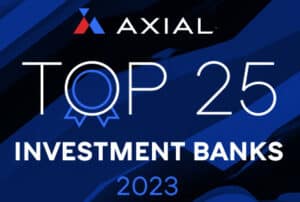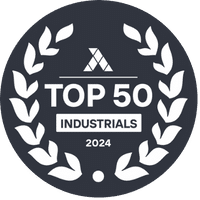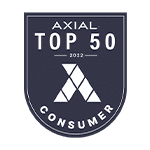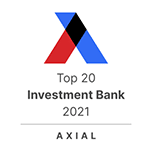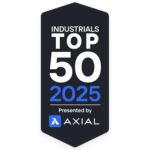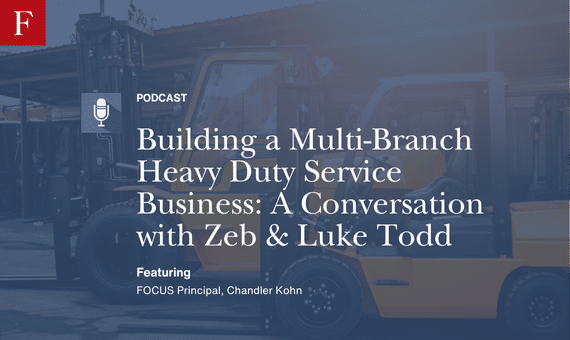
Building a Multi-Branch Heavy Duty Service Business: A Conversation with Zeb & Luke Todd
In this episode of Know to Grow, host Chandler Kohn chats with brothers Zeb and Luke Todd to discuss how they’ve grown their family-founded heavy-duty truck service and parts business from its roots in 1978 to a five-location operation with more than 85 employees and 50 service bays. They talk about balancing leadership roles, managing large-scale inventory, competing with OEM dealers and online sellers, and adapting to new technologies like AI to streamline diagnostics, accounting, and inventory management. Tune in for insights on scaling in a cyclical industry, staying competitive, and preparing for the future of heavy-duty service and parts distribution.
Zeb Todd: I’m Zeb Todd and I am work here at the shop with working primarily in sales. Overseeing our salespeople, our inventory, our parts and heavily involved in our part sales. I’ve been here since. Well actually I was raised here. Left out of high school for a few years and came back in 2013 and have been here ever since.
Chandler Kohn: Good. Luke, how about yourself?
Luke Todd: Yeah, same thing somewhat. Our dad started our company in 78 and so we were all drafted at a young age to do all the awful tasks around the shop that need to be done. But we. I’ve been on full time in the company since 2000, so about 25 years now. I was started out in the shop as a tech and then we started our, our second branch and I went to run that and then I’ve been involved in starting the branches ever since. Less so in the last couple ones, but pretty instrumental in the first three. I’m now officially the president of the company, so. Which basically means I bounce around and just deal with whatever needs dealing with problems, you know. Yep, exactly.
Chandler Kohn: And Z, my understanding is you’re kind of more the operating brains behind the company, is that correct?
Zeb Todd: I don’t know if that would be exactly true. I. I oversee all of our product lines, all of our vendors, all of our inventory, all of our parts, all of our sales. I help with a lot of the initiatives of new stuff. Luke would probably be a lot of the operating reins behind there. Actually he would be the one more. You know, final decision making or in. In all that. I think I do help in a lot of that with the operating. But yeah, that would probably be how our structure is.
Luke Todd: I do a lot of the financial end of it and then also since I do have more background in service than Zeb does, I’m. I’m a little bit more tied to the shop and decisions made there just from A you know, from a management perspective at least not. Not really a hands on perspective but just leading the service departments and the op managers and so on.
Chandler Kohn: Yeah. So you probably have a good understanding of QuickBooks, right?
Luke Todd: I am. I would almost say I’m a QuickBooks maniac. I don’t know if that’s actually true but close to it probably.
Chandler Kohn: How many, how many? Talk about your services you offer. Every shop’s a little different parts and service and then how many employees you have.
Zeb Todd: We have right about 85 employees give or take a few. And all the shops would have. They. They have the same base services and parts that we offer. So we do bumper to bumper at every store and that it were very, very heavy in engine diag electrical after treatment. That would be what we would probably be known for from a service perspective. But we will do all the driveline, wheel end, you know, bodywork if need be. Trailer work, trailer collision work. We’re starting to get more into that. We do have specialties we do at each shop. One shop has a driveline machine and a DPF cleaner. One of them would be a little more involved in. One of them has the paint booth at it. One of them has more suspension and spring work at it. We do have alignment racks all the shops. So we have the same, same concept of services at each of them. But we do have some niche things that we do there. There’s light duty. We do a lot of that. A couple of more of that at two of the shops than we would the rest of them. More like the pickups with diesel engines and even some commercial gas engines we work on also. That would be kind of how the services are. And then the parts would be. You know our. Our saying would, you know would be if it. If it goes on a truck or trailer, we’ll sell the parts for it. So we would offer those at all the stores although we only have three of them that are heavily involved in part sale. We sell parts at all of them. But three of them would be more of our main part stores.
Chandler Kohn: Okay. You have about what 20, 25 bays.
Luke Todd: Maybe or more than that across all the shops. I’d have to count them up here. But yeah, There’s. We got 12 and 12 is 24 and 10 is 34 and then C6 is 40 and 10. So we actually have 50 base across. Yeah, across. Across the.
Zeb Todd: I think we have. Between all five stores there’s about 90000 square feet if I’m not mistaken. Roughly, yeah. 85 to 90, 000.
Luke Todd: About half of our, like Zeb was saying, a lot of our parts, a lot of our building is dedicated towards part sales. So we have, you know, parts, you know, display areas and counters and inventory control and all that. So. So we have, you know, the shops and then, you know, obviously each shop has anywhere from the smallest shop has six, six working bays and the larger ones have 12 in them.
Zeb Todd: And then we have some mobile guides, mobile out, mobile guys as well, that are out on the road all day.
Chandler Kohn: 5 to 10% of your business, maybe, something like that.
Zeb Todd: Yeah, right now.
Luke Todd: It’s, it’s a growing area. I would say that it’s probably, I would say we’ll see more growth in that over the next few years. Definitely the market shifting in that position and we are capitalizing on it to a certain extent. But we, we keep playing business with the brick and mortar too. So.
Chandler Kohn: Yeah. And after you guys, I have somebody, my next recording, he’s going to talk about the business model within mobile versus kind of in shop. So Nick, stay tuned for that one too. Some perspective. Okay, so the industry has been experienced on, you know, cyclicality. It is a cyclical industry. Obviously we’re, we’re kind of down right from where we were a couple years ago. Couple people I’ve talked to are kind of flatter up. Where are you guys and what are your thoughts on where it’s headed in the next two years?
Luke Todd: So we have, we’re actually up this year. Good. Which is good. Yeah, it is. This year appears to be better than last year, but last year was not as good as the years before. A couple years before. But I mean that’s, it’s almost like not really. You can’t hardly compare the post Covid years to real life. I mean, there was like trillions of dollars dumped in the economy and everybody was just, you know, trucking was hot. Everybody was buying trucks, fixing everything and just go, go, go, go, go, you know, and so that’s, that’s almost unrealistic.
Zeb Todd: It is, yeah.
Luke Todd: In there and then. So. But yeah, we’re, we have had some steady growth this year. So that’s been exciting. The market’s definitely down. Trucking is down. It’s very, it’s been a struggle for, for truck companies and not just your small owner operator, I mean not just your small fleets and owner operators even. And we’ve seen a lot of large companies go out of business across the country this year or over the last 24 months probably. So yeah, it’s definitely tight out there. I think some of our growth comes from serving markets that are not necessarily directly related to hauling freight, whether that be a gas company or propane company or a furniture delivery company or just things that’s like, yeah, they have trucks and they do need to move their. They need to move product, but they’re not necessarily in the logistics business. So.
Chandler Kohn: Yeah, makes sense. Are you guys having trouble getting parts at all from any of your suppliers?
Luke Todd: We really are no more on that.
Zeb Todd: Than I know now. That’s all been. I mean, every once in a while you’ll run into something, but that for the last couple of years, we’ve. It’s been pretty solid.
Chandler Kohn: Yeah. Okay. You know, we have a. I don’t want to say too much. We know somebody that’s in the space uses a lot of Hendrickson parts and for suspension, they’re still having trouble.
Zeb Todd: Yeah, I heard Hendrickson was, and I.
Chandler Kohn: Think that’s because Watson bought Hendrickson or something like that. And maybe there’s issues with the ERP system that have been lingering. Is Hendrickson the only supplier that you’ve heard of that’s still struggling to get parts out or others?
Zeb Todd: There’s a few categories that we. That I’ve heard some people talk about suspension, some people are having some issues with shocks and filters has been one of them, I think some of that, I believe, is due to suppliers are trying to reroute for. Because of the tariffs they’re trying to pull from other countries, maybe to try to alleviate some of the tariffs. And so that’s putting a delay in it. I don’t know if I’m right on that, though. But overall, I mean, my opinion is if a manufacturer that you trust doesn’t have the shocks or suspension parts, go to another manufacturer that you would trust. And it may not be your first choice, but they also have it available. So, you know, buy what they have and keep moving on it. Really, realistically, the last two years, other than some disruptions, we’ve. It’s not been bad at all. It’s nothing like it was, you know, 21, 22, where it was panic buying and. And everybody was panic buying and nothing was available and stuff that you said you would never, you know, get within 10ft of a truck. You got all excited about a dozen of them because you seen a vendor had them. That’s all pretty well been cleaned up the last couple of years.
Chandler Kohn: Okay, so it’s October 1st now. You know, we’re probably going to see another rate cut here before the end of the year. You know, Some other things are going on. Where do you, where do you see this business, you know, in 2026, you know, maybe 20, 27. I know that’s honestly kind of a long term when it comes to forecasting. Do you think 26 is going to be up over 25 overall?
Zeb Todd: I don’t know.
Luke Todd: Yeah, I, I wish I had a crystal ball on that. But I think that we’re going to see growth in it. I, I think that the, I don’t know how long the trucking market can be kept down. There has to be a point where, where things pick up again for it. If the rates are cut then that could spur some investment from companies and maybe jump start some, some trucking again. But it’s still, there’s just, there’s too much, there’s too much supply of trucks for the demand of freight right now, which is what’s been driving, which has been pushing the cost down. And so I don’t know how much more demand you’re going to. The country needs to see for, for it to become profitable, you know, for people to, you know, to jump back into trucking or to drive the rates back up and so on the whole nature it appears of the trucking industry, his moved it changed around and I don’t know if it’ll ever go. I don’t know if it’s going to go back to the good old days of trucking, the glory days or, or whatever. Freight will always need to be moved and it’s always going to have to happen. Will it be become something that is that you’re able to do at a, you know, at a profitable pace or with. Has there been enough infiltration into the market with cheap carriers that we, you know, that, that there’s an unlimited supply of that and it may not, you know, I don’t know. I don’t know how much demand you have to get to come off of that.
Chandler Kohn: Now that makes sense. You know, when, when, when markets are flat and companies are flat and obviously you guys aren’t. But you know, the way I see it is, is owners should be focusing on making their operation as efficient as possible so of minimizing their expense to maybe grow their gross profit or net income. Want to talk about how, you know, AI could potentially make the operation better, maybe more efficient and kind of where you think that’s going? Like what are some real applications of AI within the heavy duty space?
Zeb Todd: I think we’re just starting to see the, the beginning of it and I can’t believe how fast that’s moving like, I mean for myself and I just heard some statistics on this the other day. But like, you know, the Internet was talked about for whatever it was, you know, five to 10 years before it became commonplace. And then iPhones were, it took what, two or three years probably for everybody to go from a flip phone to an iPhone. Maybe shorter time than that. And then you take, you know, I’d say at the beginning of the year, probably the beginning of this year, the end of last year was the first time I ever heard of chat GPT and now I use it probably an hour a day. And I would say that would be pretty, I mean that’s probably even pretty minimal for, for commonplace. But I mean we use this, I mean I think most of, there’s probably most of the people that are in an administrative role are starting to use this all the time. Chat GPT and or whatever other platforms are out there for that. Google Lens, you know, parts identification specs. Now I am still a little bit of the, I’m still a little bit in the phase with chat is, you know, trust or trust but verify. So I haven’t, I don’t think it’s quite learned everything 100% correctly, but a lot of times it’ll get us pointed in the right direction. Whether you’re trying to look for a part number, you’re trying to look for specs, you’re trying to look for a cross reference, you’re trying to look for, you know, simple diagnostic failures. You know, something as simple as maybe on a truck or you know, I took a picture of my air conditioning unit in my house this summer because I was having an issue at it, took a picture of the model and the serial number, said what I was having and boom, said, here’s what you need to try. Try that. Ready to call a technician out to work on it, end up putting a filter in it and everything started working again the way it was supposed to. And that’s, I mean that’s a very, very simple one. But that’s, I think we’re in the emphasis of that right now that not only as it’s learning all this but also as people become more adaptable to it and either a, whether or not we should be freaked out by AI or just get comfortable with it remembering to use it, getting used to using it. I mean I can see in another, in another three months I would say probably we would double our usage and I would say in six months we’re probably gonna, you know, double that. Again about the, not only the amount of people using it and the company currently, but also the amount of times we use it for, again, simple diagnostic, parts identification and just information about whatever it is you’re working on trying to figure out how to fix this truck, how to fix this trailer, or how to locate this part for a customer. Google Lens would be another one we started all using recently. Take a picture of a part, brings up all the information and you know, again, trust verify because it does get stuff wrong occasionally.
Chandler Kohn: Yeah. You know, Mike Schwarz with Iron Buffalo, he was, he was telling me, you know, you know, maybe it’s not there for the dialogue stuff, but it is, you know, maybe good at preventative maintenance and doing, you know, some of the, you know, what do you have to do to replace, you know, a turbo, for example? Right. You know, in terms of the dialogue, do you think it’s, do you think we’re going to be lagging with the Google lenses? Do you think we’ll see that in three years? Where are we with that?
Luke Todd: I think, I think we’ll see. I think we’ll see. I think we’ll see AI diagnosing trucks definitely within three years. It’s, there’s, there is way too big of a technician shortage for that not to be a massive push in, in the industry. It’s not. And the problem with, I mean the challenge, I should say with technicians and shops and everything and so on is that there’s, there’s a, there’s a small percentage normally of, of a technician workforce that can actually do the diagnostic work. And there’s, we need every one of them. But, but you gotta have a certain, you have to have a certain makeup to be able to be a troubleshooter, a problem solver, et cetera. That’s where AI shines, is that it can, it can think with the speed and power of a million technicians. And so I can’t imagine that your diagnostic software is not going to have AI capabilities built into it and already be running, you know, test and thinking about potential issues and, and all that, taking all the data that’s being pulled in from the data links from all the modules all over the, the truck and, and be thinking, like I said, it, it will, it will out think technicians almost guaranteed in three years, in my, in my opinion.
Chandler Kohn: Interesting. How should a small, how, how should a small group, maybe one to two shops think about funding and investment in this when they don’t have the balance sheets of the larger players in the industry?
Luke Todd: Yeah, I, I’ve actually thought a lot about that. I think that And I don’t know the answer 100%. I think that though there’s enough interest in this space that I don’t think you’re going to have to be a real pioneer in it. That’s kind of what I’ve come up to. I think there’s a lot of people interested in this, a lot of companies interested in this, a lot of investment interested in this, and a lot of work going on as we speak with these companies on how do we take AI and how can we move this into that. So I would say that for a shop, it’s going to be very much like you’re using pen and paper, let’s say in the old days to keep track of your inventory and your jobs and now you don’t, now you use a tablet and all that. It’s not because you as a small shop went out and built software to do that. Somebody else came up with a solution and you paid a monthly fee to access that data and so to access that service software as a service. And I would assume that this will be the same way. There are companies out there, everybody’s working with AI right now. Everybody’s in the space, not only in the HD heavy duty space, but all over the country and every industry. And so there are companies, I guarantee it, out there right now that are working actively on this, but they will come up with solutions. And all shops, whether small or big, will only have to pay to access to access that solution and start utilizing.
Zeb Todd: That’s my opinion.
Chandler Kohn: Yeah, got it. Yeah. An affordable monthly recurring expense, right?
Luke Todd: Yeah.
Chandler Kohn: Just like all SAS programs.
Luke Todd: Yep, exactly. And we’re using, I mean, we’re using AI like Zeb said, you know, we use chat obviously all the time. It’s super handy whether you’re analyzing spreadsheets or whether you’re researching part numbers or whether you’re looking for diag information. We’re also recently got integrated into our software. We’ve been using chat just to clean up technician descriptions just because just copy paste, like, hey, make this sound presentable and throw it over here. And it would pretty everything up to stick back in on the service order before it goes to invoice. But we’re already seeing the platforms integrate that in with like a polish button. So the technician writes their description in, but maybe it’s not polished to where the what you want to look like for the customer. Whereas in the old days the service department team would be, you know, cleaning all that up and getting it presentable. Now it’s just a click of A button. Boom. It sounds like a rocket scientist made it great, you know, good to go on that. And so that’s. We’re already seeing that. We’ve been working. We. We’ve built another app that we’re using that is integrated with our accounting and also statements. And so it’s reading and verifying and taking. Taking a lot of the work off the accounting department. Reconciliation of vendor statements. And so that’s another area. Like you were saying earlier, the name of the game is trying to keep expenses low. And so that’s part of AI, is it gives you so much leverage. And so, like, our kind of goal is, okay, it’s interesting because it used to be, you know, can we justify the manpower to do this? And now it’s like, okay, can we use technology to do this, or do we really need to make a hire? So if your department starts getting overwhelmed, let’s step back and look at this and say, is there we use technology to solve this, or do we need to literally get another, you know, more manpower in here to take care of this?
Chandler Kohn: Yeah. Don’t Forget to put KPIs around it. And kind of track where you are before and after.
Luke Todd: Yep, exactly.
Chandler Kohn: Now, did you have to. You mentioned you had to develop it. Is there not a. Is there not a company or provider that has a solution that’s out of the box like this right now?
Luke Todd: No, not. Not the way that I wanted it to work. There was some out there, but it was. I don’t know, it looked like more piddling around trying to use it. I knew what I wanted, and so we just had. Yeah, we just had it built. And it’s. And it’s. It’s nothing fancy, but it works really well for us, and we’re building on it all the time. And we. We plan to carry on with that with more and more projects. Right now, it’s in accounting. Next on the list is inventory. Inventory control, inventory tracking, velocity, just everything that goes into managing your inventory. We want that in a. We want to be able to use AI to help us with that because it takes too many smart brains. It takes too much talent to do that. And that talent would be better spent on areas where, you know, where we can’t utilize technology to do so.
Chandler Kohn: Yeah. Yeah, makes sense. Good. That. That’s very helpful. And then any other non AI technologies, obviously QuickBooks, pretty basic. But any other non AI stuff that you guys like or use or it’s benefiting you.
Zeb Todd: Yeah, we have just some apps that we’ve built in house. That our IT department has done that we use for just keeping track of parts transfers between stores, our delivery board for delivering parts. Everything from time clock to just various departments if they have issues with stuff, maintenance and all that just forms that we built that’ll go onto a dashboard. Just keep, keep our maintenance, streamline our inventory, streamlined our. Yeah. Calendar, vacation time. All that is streamlined through just some, some absolute bill. And they, they work very well. I mean they’re, they’re probably, honestly maybe getting outdated, but we still use them day in and day out. We live on them and that would be one of them. It’s just a company app that we have and then some other ones. We just got a subscription recently to Pro Keep, which is a texting service trying to be able to get customers to text us through that. A lot of guys will give out their cell phone, but I kind of hate it, hate to ask them to. Plus if they’re going on vacation, they’re still texting them and they’re trying to send them back to us and they’re off and they’re still getting sucked into it. So trying to give an option for customers be able to communicate to a whole group of people versus just one person. They’re still welcome to give their personal cell phone out, but I’m not going to ask them to. If they choose to, they can. But this is a number. Hey, just text this number and we all get this automatically. Obviously we use fullbay for our ERP system running everything and then those would be the main ones. I can think of non AI technology.
Chandler Kohn: Kudos to you guys. You’re doing a good job.
Luke Todd: Our, our Servco app, as we call it, has like probably it probably like 50 functions in it for different people in different departments for different scenarios. And so that’s how we try to keep everything. Because it becomes within one location, it becomes a wild west into it. It gets even further west by the time you get to 5 5. And I can’t imagine, you know, these companies that have, you know, 20 locations. But it’s like if you don’t have structure, you don’t have some sort of process and a way to tackle it, then it’s, yeah, it’s a free for all. And so that helps us like pull everything together into, you know, just a process. But you know, you sell a turbo over the counter and the thing fails and the guy comes in and drops on the counter. What do you do? You know? And so it’s like, okay, okay, here’s the process for doing this. And Doing that and running the warranty and this, and tracking all that to make sure that the customer’s taken care of and that we get our credit from the vendor, which sounds simple, but you start getting that going a bunch of times in a bunch of different areas by a bunch of different people, and it can turn into a mess really fast. You got money just, you know, you got refunds that aren’t happening. You have customers that are upset, you’ve got, you know, lots of lost revenue in there. And so just, yeah, pulling all that together into a system where we can monitor it, watch it. And that’s just one example. It doesn’t matter if it’s somebody that’s taking Friday offer, if it’s a turbo return or it’s a, you know, what, you know, whatever. Fill in the blank. Yeah, that’s right. If it happens. Yeah, yeah. You got a, you got an oil, oil line leaking in the shop. We got a way for you to report that and a way to monitor, track it till we get it, get it accomplished by the maintenance department, you know, and so it’s like just trying to keep all that out in front of everybody. It’s still a challenge though, honestly. You, you still, you’ve trained, you trained, you trained, you trained, you trained. Next thing you know, somebody doesn’t know how to do that. It’s like, okay, let’s back up and let’s hit this, let’s hit this again.
Chandler Kohn: So let’s, let’s switch gears to parts. Now, Zeb, you and I were talking about this last week, but OEM dealers breaking into aftermarket distribution. Now you mentioned that’s a bit of a cause for concern, right?
Zeb Todd: It is, it is. It’s definitely does have its effect. And I think there’s, there’s two things that I can. That I, I wonder about, or several things that I wonder about with that. The OEMs have really ramped up their aftermarket brands, especially in the last decade. You got alliance, you got trp, you got Fleet Line. I think Road Choice. Everybody’s got their aftermarket brand. They’re starting to push. They push all makes, all models. They’re still, I feel like, are. If they’re a Volvo dealer, they know Volvo. If they’re a Kenworth dealer, they know Kenworth. I do think they’re getting better at it. And with their buying power they have. You take the general commodities that are just the low hanging, easy fruit or easy sales, the laying fruit, those are. It’s pretty quick to see those get gobbled up by the OEMs. So that’s something that I think we’re going to keep facing. I probably more than that would be not only the fact that they are getting more aggressive about doing their distribution, but along with that, you know, it’s, it’s so common anymore to somebody puts part on the counter, says hey, I want to buy this. You tell them it’s 50 bucks and they hold their phone up and say, well I can get it on Amazon for 32. Well, I’m sorry, do you want it tomorrow or do you want it today? And you know, well, could you do 45? And it goes back and forth and back and forth on there. And I think that with the, between that and in the OEM presence and the OEMs, I will say they have done a good job of, of fusion. And in the area we’re in, there’s not a lot of independence that push parts hard. They don’t. There, there’s, there’s some. And then of course you got your fleet finance truck pros that have nationwide presence also. So as far as how we, how we counteract that, I’m still trying to figure out the best answer. I’ve got some, I’ve got ideas what we’re trying to do. One of the things that we, we try to push is all makes all models, not only do we carry it, but hopefully having a working knowledge of all of it. So yes, we’ve got the Kenworth spring, yes, we got the Volvo spring. Yes, we got, we probably even have the spring for a old international dump truck we probably shouldn’t stock, but we have that too. You know, if it’s turbo, we’ve got them for, you know, four different engines. If it’s and, and trying to source, okay, not only is we have this, we know what’s in this box. We’ve researched it, we’ve tried and painfully found out that this particular brand over here is not the right one. This brand here actually makes it for these OEMs. We’re going to go straight to that, try to get a, a good quality brand of that particular, particular product and then just in time delivery. I know that one of the things that we hear from people is yeah, we try hard to have that Napa type service where you call me run it out there too. Now we can’t do it, you know, hot shot, non stop. But rather than having routes that leave and get back that night trying to continuously say, okay, how can we get this sped up to where you call? And hopefully we say, hey, within X amount of time we’re going to be there and keep doing hot shots back from the shop. That and the, you know, the other thing. I think that one of the things that we’re doing, and this may be. It may be useful to us. And I know it doesn’t probably fit every business, depending on how your buildings are positioned, but, like, yesterday, our shop in Columbus called our shop in Greenville, and they’re two hours apart and said, hey, do you have any deliveries going north tomorrow? We need a part up there. Yeah. I said, yeah, we got one going that’s about 45 minutes north of Greenville. They said, another 15 minutes. There’s a part up there place we need this oddball part. I said, okay, cool, I’ll put on the delivery board called her, hey, can you pick this up? Can you go in there? 15 minutes, pick this part up? Yep. It comes back, we get it on the shuttle, it makes its rounds and ends up in Columbus this morning. Which is nice because we can. Because we were just, you know, spread out there. And we’re spread out, but we’re still a, you know, small enough company that we. We know each other at each other’s shops and we call each other. Hey, do you got anybody going over this way? We’ll do the same thing. Hey, we’ll call her to Columbus. Hey, there’s a manufacturer for, you know, XYZ part over there. Can you guys have your delivery guy pick it up and get it on a shuttle, go back to here, and we’ll have it to the, you know, halfway across the state in three hours? So, yeah, that’s one of the things we’re trying to do that, um, again, with the way we’re positioned around here, that’s maybe not applicable to everybody, though. But we’re trying. Yeah.
Chandler Kohn: And then in terms of, like, inventory strategy, you know, it’s really hard to, To. To kind of optimize. Do you guys feel like you’ve. You’ve done a good job with kind of optimizing that? Like, what does that look like? Are you still working on it? I. I know folks struggle with managing inventory and space, being able to fill, fulfill customer demands as they arise. Just wanted to touch on that.
Zeb Todd: I asked me again in 20 minutes, and I’ll probably change my mind, but I go on a roller coaster of we’ve got to turn our inventory because that’s cash on a shelf, and if it’s not turning, get rid of it. And a week later, I’m giving everybody a heads up that, hey, I Just bought two trailer loads of something into showing up and we. I just. I’d much rather have parts on the shelf and not lose sales and you know, heck with the inventory turns and. And then I start seeing wow, I’m out of room on stuff and why do we even stock all this anyway? So I start trying to back stuff down. It’s a lot of work clean to keep a clean inventory. We’ve maintained about 3.2 turns per year all year long. And we’ll get. We may do somewhere. It may go down to 2.8 for, for a few weeks as if we do a bulk buy on something. I think it’s been up to three and a half. But as a general rule threes our target and we’ve. We’ve held maintain three turns on our inventory all year long. So we, we keep it. I feel like we have a. A good handle on it. I’m hoping with AI we can improve it. I think that we take good care of it by cycle counting. Excuse me. We just put a new process in place about two weeks ago to try to identify issues. Our hope being not only are they getting fixed, but they’re getting fixed correctly and not just getting band aided if miscounts are off. And then hopefully go back to the root cause of what some of the issues are if we have inaccurate counts. But it is, it’s a lot of work. It’s lots of work. There’s a lot of moving pieces. There’s a lot of pieces. We bulk buy into one of our locations for a lot of our stock orders and then those get distributed back out. And so we have, within our app that we use, we have a receiving process for that that’s supposed to do checks and balances. Okay. We checked it all in at this store. It goes to the next store. They get a packing list of exactly what’s in there. They check it in again, verify and you know, we’re on a continual cycle count. Every store’s got a schedule. They get their schedule at the beginning of the month and there’s a couple people designated to go through. We try to keep it about 1000 numbers per store per month. That fluctuates a bit. Little, little bit based off the store, based off the parts we’re on that month. But everybody’s always on a cycle count. We do maintenance reports every week and, and we’re really. I feel like we were really good about being consistent and thorough on that. But I’m always. I think that we could do. I think there’s always room for improvement. But a large inventory is a lot of work to keep track of and people will. Yeah, it’s, it’s really hard to keep everybody focused on.
Luke Todd: Yeah, I would say that we, I would say that inventory control never ends. Inventory control always has to be worked on no matter how good you are at it, because things change. And then, and number two is, I would say from an independent truck repair company’s perspective, I would say that I would give us a really, really, really high review because I think we’re really, really obsessed with it and we, and we, we obsess over it and we were dialed in on it. Do we make mistakes? Of course we do. And could we do better? Absolutely we could. But when I, I have visited a lot of shops and I, I know that our processes and management is pretty, is pretty solid for the most part. Now again, it takes a lot of time and so that’s where we want to utilize technology to try to, trying to help us not only get better at it, but also shave the time off that it takes to, to do it. So.
Chandler Kohn: Yeah, understood. That’s helpful. You know, a lot of folks in this space, you know, kind of the, the baby boomer generation, they. A lot of it’s word of mouth, not doing a whole lot of marketing and advertising. You guys feel like that’s important across your portfolio of locations. And how do you handle that?
Luke Todd: I think it is, I would say, I would, I would, I would think the marketing is as the saying goes. I hate marketing because it’s like you never know if the money you spent is actually paying off or not. And I know they say that half of your marketing dollars are wasted and the other half are well spent. The challenge is finding which half is which. And that’s how I feel too. It’s like you just. But we run a pretty extensive Google campaigns. Google Ads, call ads. We track that really close. We use call reporting. And again, it uses AI to summarize calls to be able to tell how our ads are performing, how our Google profiles are performing. We’re pretty radical on protecting our Google reviews as much as possible. Proactive on that. I guess. That being said, I still think that we have so much, so much more to learn on, on that just from the, you know, when a website, you know, visitor hits, what happens? What are they doing? You know, what’s your customer acquisition cost? What’s your value of your customer, you know, and so on. And so I, I would get, I would say that we’re focused in on it. We Actually put quite a bit of dollars towards it in various areas. I don’t know that I’ll ever be satisfied that the ROI is good, but it seems to be working and so we keep doing it.
Chandler Kohn: Okay. All right, good to know. Zeb, you mentioned from a strategic planning around product and service offering, Obviously everybody knows EVS are not an immediate 911 here, but are you looking at that into the, in the future for the business?
Zeb Todd: I think that we are always aware of it, that I’m not scared of it. It’s. To me, it’s, you know, there’s, it’ll be something to learn. But I think that. And it’s this kind of been our way on everything is there’s no reason to try to beat the system and get around it. I think that it will, I think they will make it. And it may be three years, maybe a decade, maybe 20 years. I think we’ll still start being more commonplace probably in the next decade. Decade, we’ll see more of it. And I think the main thing for our philosophy is when this comes, it is, it is the next. This will be the next big thing until the next big thing comes along. So if we want to be, you know, remain relevant, then let’s learn it, let’s adapt to it, and let’s, let’s figure out how to work on this and let’s figure out, take care of our customers because it’s probably not going to go away. It’s just like after treatment, you know, you start out with, you know, EGR valves, then you go to a DPF and then DPF doc SCR death and on and on and on and stuff that I don’t even understand. But you’ve got a couple options. You could say, I don’t want to work on that. And, you know, I only want to work on stuff that I’m familiar with. And that stuff’s dumb and I don’t want to have a part of it. Whether or not that is true, you know, since 2007, you’ve had a BPF on your truck and, and to remain relevant, you need to figure out how to work on it. And I kind of think EV is going to be the same thing when it does come out. And there may be, I don’t know what the challenges are going to look like that we’re going to run into, whether that’s longer warranties or whether that’s, you know, the legal right to even work on them. I don’t know what all that’s going to look like. But I think the main thing is being willing to say, yeah, we are going to embrace this and bring this in as part of our offering when this actually hits.
Chandler Kohn: The theme of this podcast is growth. I want to take a step back and understand maybe what the biggest inflection point to the growth in the business has been up until now. So taking a look back the past 25 years is the one thing you guys did right or just did that really grew the business. Was it more of like a location strategy? Was it more of like the technology in the back end? Was it getting middle management? Like, what. What did that look like for you?
Luke Todd: Yeah, well, a little bit of all the above, of course. Definitely adding locations helps, but it’s multi. Location is hard to do the first ones. I mean, going from one to two is really hard. Two to three is still pretty hard, and more is hard too. But you learn a lot about what not to do as you spread your talent pool out across that. If everybody’s in the same building, you can all rely upon each other’s knowledge. You have your back. When you start splitting that talent up, it gets. You need multiple key people, you know, for different branches. And so I think that learning how to manage people, how to set expectations, what metrics are really important to watch and really, really preaching customer service, just, just very, just, just getting that in. That’s, I would say that’s probably the biggest piece of it because otherwise you can’t. You can add 100 locations. But if everybody treats their customers, customers like, you know, junk, and you don’t have key people that know what metrics to watch and what they’re accountable for, then you’re, you know, the locations don’t matter, do not matter at that point, you know. And so I really think that the management is, has been key in that. And then number two is, is, I will say I think the I take on our parts sales and really, really going all in on that has, has helped, helped our growth too. It’s a good fit for us because it’s, you know, it allows us. We do the work on the trucks in the shop, but then also we have customers that never would come to our shop that maybe would never even be a shop customer because they do all their own work, but we’re still able to, you know, supply them parts and it’s made our customer base bigger.
Chandler Kohn: Good. And that was going to be a question for my, you know, in the closing advice which we’re getting into now is, you know, do. How do you manage those Five locations. So appreciate you answering that. And then the, the last one is, you know, how should the independent shop owner think about being adaptable to maximizing their profitability? Change is okay. Change is required. How should a, how should a smaller shop owner think about that?
Zeb Todd: In my opinion is that I think being able to flex and we don’t ever want to sacrifice, you know, our core values and, you know, what we stand for and what we do, but, you know, there’s a difference between, you know, reaching out for the opportunity and capitalizing on the opportunity versus chasing random, shiny things, as we’ve said before. And I think that the ability to, to be flexible on, you know, what works in one shop is not going to work in another shop, even, even within our own company. And so whether that be, you know, how you. What kind of customers you’re actually working with, what kind of equipment they have, you know, there would have been a time when we would have been like, you know, oh, you got a gas engine? Well, you brought a lot of stuff to us. You got, you got, you know, 20 dump trucks and we’ll work on your pickup out of, out of kindness. And, and now we’re like, well, you know what? There’s actually a market for people looking for this on gas engine pickups is what we do. No, we’re known for Class 8, 6, 7 and 8 diesel engines, but we’ve started being more flexible on that, even though that’s maybe not originally what we would do. And, you know, other. Other things like that. Just, we want all the shops to operate in the same procedure with the same, you know, integrity, the same core value, that same. I don’t know how you want to say it, that just like, ethical output. But you may have to bend how you do something. You may have to bend how you operate to get the same result. That’s not. And that doesn’t go against our integrity. Does that make sense?
Chandler Kohn: That does make sense.
Zeb Todd: Yeah. There’s things that work in one shop that don’t work in another. And some of that’s. Some of that’s demographics, some of that’s local culture. Our rural stores are a lot different that operate a lot differently than our rural stores on how you do some of that stuff. Even though we’re doing the same thing, we fix the truck, we find the part, we fix the trailer, we order it, we receive it, we prep an invoice, we give to the customer, they give us payment, and hopefully they’re satisfied. And hopefully we get paid and everybody’s happy. There may be Some variances in there. So I think that that ability to. Knowing how to flex and still operate.
Luke Todd: Within your core values is really important. Yeah, I think. I mean, I would. I would say the same thing is that it’s really easy to get the structure distracted with shiny things. And the next thing you know, it’s like, oh, hey, we should be doing this, we should be doing that. You know, and getting away from what you’re so. So I guess having a very. Having a clear. Whatever you want to call it, if you want to call it a, you know, a vision or, Or a mission or a, you know, your why or whatever it is, you know, for some reason this is what you’re doing and then staying in that. So if you’re looking at extra opportunities, do they fit into that? You know, if we’re a truck repair company and we have an opportunity to pick up a transmission building line for semi trucks, well, that might be something. This fits in there. If we have a opportunity to sell. Hey, dude. Shoes that may not fit. Really. I mean, it may be a good opportunity, but it probably doesn’t really fit into our, you know, into what we are planning on offering our customer base. And so therefore, all it does is it detracts from all your energies and you. And you. Yeah, you end up spending a lot of time on that. So. So I would say that, I mean, that would be my thought, is staying focused on what you really want to do as a company, but not being so rigid that you lock out opportunity.

